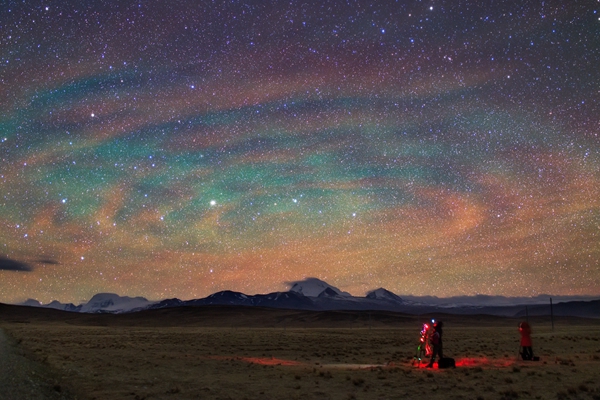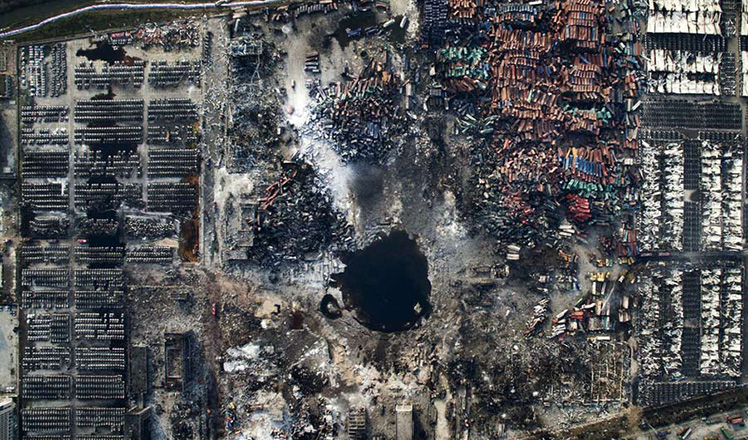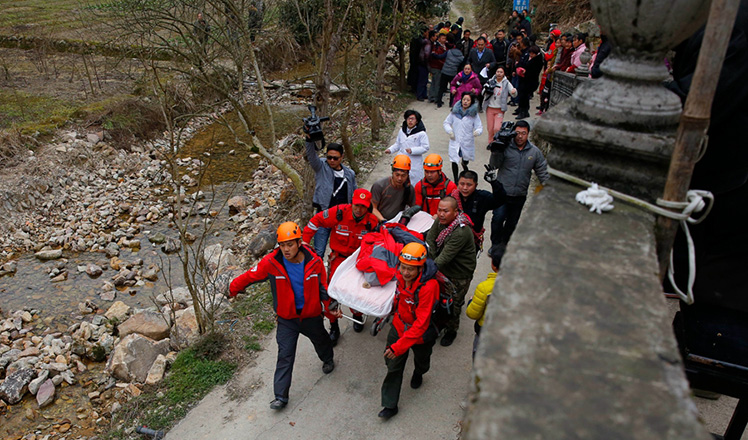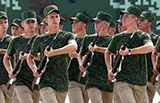Shooting for the stars
Updated: 2016-02-19 10:34
By TAN YINGZI/DENG RUI(China Daily)
|
||||||||
 |
|
Airglow rippling over the Himalayas, taken on April 27, 2014.[DAI JIANFENG/CHINA DAILY] |
'Universe Boy' wins photo honors from NASA, magazines and websites
Dai Jianfeng took four years to complete his transformation from automobile engineer to astronomy photographer.
His stunning work has been published on the websites of NASA, the Proceedings of the National Academy of Sciences in the United States, and other international media sites dedicated to space and astronomy. A Japanese website even dubbed him "Universe Boy" in a story about his photos.
"Shooting the starry night is not only about the artistic beauty in photography, but also about the implementation of astronomy, geology, history, culture and meteorology," Dai said. "Sometimes, you risk your life."
NASA has published four of Dai's images online, under his English byline, Jeff Dai, as its "Astronomy Picture of the Day", including a recent photo depicting a colorful solar corona over the Himalayas.
Another shot, an image of a starry night sky over the Himalayas taken in 2014 graced the cover of the Dec 8 issue of PNAS, the official journal of the US National Academy of Sciences. The photo taken from the Tibetan Plateau showed gravity waves "revealed in a thin layer of glowing atmosphere called airglow".
"The orange colors come from excited hydroxyl radicals, and the green colors from oxygen light emissions," the journal explained. "In the foreground are the Himalayas, and astronomy photographers capturing the night sky."
Scientists from NASA and the US National Oceanic and Atmospheric Administration captured the same starry sky from space with the help of satellites, so Dai's photo provided "precious synchronous data" observed from the ground, the journal said.
The 27-year-old, soft-spoken Dai was born in China's southwestern municipality of Chongqing. In a mega city of nearly 30 million people, light pollution obscures the upper atmosphere and his childhood memories do not include a starry sky.
After graduating from Chongqing University in 2011, Dai became an automobile engineer and played video games in his free time. However, a weekend stargazing trip to Mount Fanjing in nearby Guizhou province changed everything. He fell in love with astronomy, and set out to record beautiful moments of light in the dark.
In August 2012, he published his first photo in Astronomy, a US monthly magazine. Shot in Southwest China's Yunnan province, the photo shows the Milky Way at moonrise.
On another shoot, he almost got lost when crossing a glacier. And he was once chased by nine wild dogs in the Tibet autonomous region at midnight.
- Missing children found safe in nearby village
- Rich Chinese splurge on sportswear as luxury's lustre dims
- Urgent remedy sought for pediatrician shortage
- China starts safety check for school buses as new semester draws near
- Ticket scalpers face crackdown at Beijing hospitals
- Judicial DNA test in hot demand after policy change
- Balkan, Austria police agree to register refugees on Macedonian border
- Turkey blames Kurdish militants for Ankara bomb; vows reprisals
- Britain scrambles fighters to intercept Russian bombers
- Chinese community to protest against Peter Liang's verdict
- Car bomb attack on military in Turkish capital kills 28
- Turkey's Erdogan says to fight forces behind Ankara bombing

 Chinese photographers' work shines in major photo contest
Chinese photographers' work shines in major photo contest
 88th Academy Awards Governors Ball Press Preview
88th Academy Awards Governors Ball Press Preview
 Egg carving master challenges Guinness World Record
Egg carving master challenges Guinness World Record
 Missing children found safe in nearby village
Missing children found safe in nearby village
 Madonna's world tour lands in Hong Kong
Madonna's world tour lands in Hong Kong
 Producing high-speed rail tracks
Producing high-speed rail tracks 
 Surreal world created by Canadian photographer
Surreal world created by Canadian photographer
 Lanterns light up the night across China
Lanterns light up the night across China
Most Viewed
Editor's Picks

|

|

|

|

|

|
Today's Top News
Investigation for Nicolas's campaign
Will US-ASEAN meeting be good for region?
Accentuate the positive in Sino-US relations
Dangerous games on peninsula will have no winner
National Art Museum showing 400 puppets in new exhibition
Finest Chinese porcelains expected to fetch over $28 million
Monkey portraits by Chinese ink painting masters
Beijing's movie fans in for new experience
US Weekly

|

|








